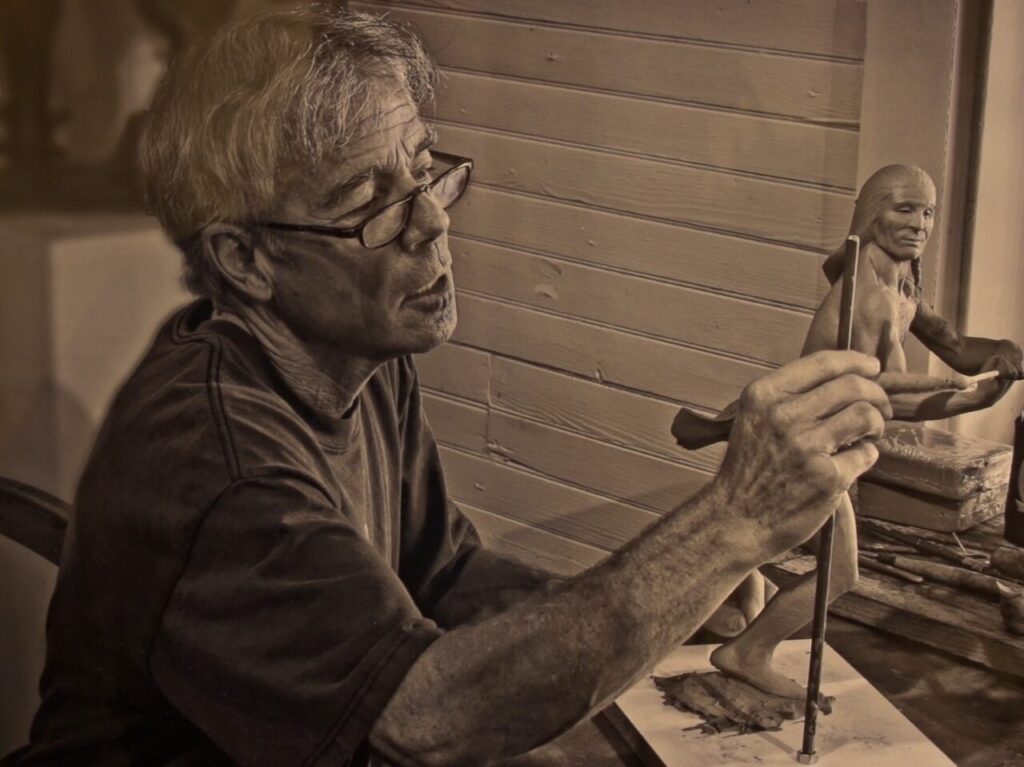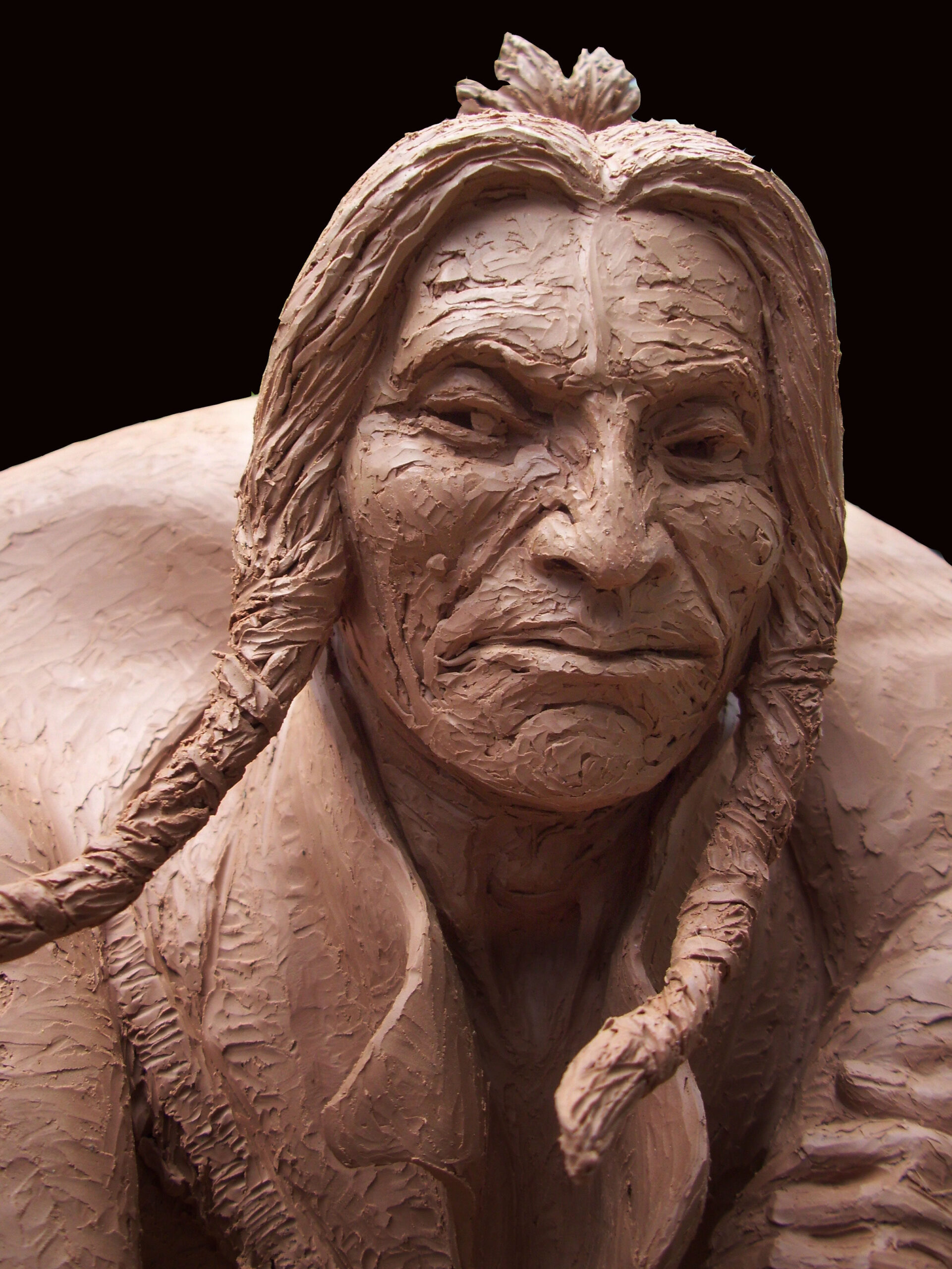
MANY EXACTING STEPS ARE REQUIRED to create a bronze sculpture. Once Jud Hartmann conceives a figure, he constructs an armature and applies the clay. A clay ‘model’ is constructed in his studio, displaying all the details that will appear in the bronze. When it’s finished, Hartmann transports the model to the foundry. There a ‘master mold’ is made from the clay model, registering the detail of the clay but destroying the clay model in the process. The rubber and plaster master mold (also called the ‘rubber mold’) is in two halves. Indeed, each sculpture requires many master molds, for one is made for each component of the sculpture and even a feather may require its own mold.
Hot wax is then poured into the rubber master molds. When the wax has cooled and hardened, the mold is removed revealing a wax sculpture identical to the original clay model. The mold seams are smoothed, and details of the sculpture are refined.
Next, a ‘ceramic mold’ is made. First, the center of the wax sculpture is filled with high temperature ceramic material. Then the outside of the wax sculpture is covered, by hand, with the ceramic material. After the ceramic mold has hardened, it is moved to an oven where the wax is melted out. (This is known as the ‘lost wax’ method.)
Finally, molten bronze heated to 2,000 degrees is poured into the ceramic molds. The ceramic mold is hammered off after the bronze had cooled and hardened. The sculpture now requires careful hand finishing — sanding, welding, and assembly. Chemicals and wax are applied to achieve the desired patina and to protect the sculpture from the elements, and special tints are incised to highlight the tattoos.
For each sculpture in the edition, this process is repeated beginning with the rubber master mold. Each sculpture is signed and numbered by the artist and each owner receives a descriptive label with quotations and historical context for the sculpture.




